Abstract
1. Effects of a new antiarrhythmic agent, OPC-88117, on the conduction properties and excitability of Langendorff-perfused rabbit hearts were compared with those of lignocaine. 2. OPC-88117 above 10(-5) M caused a significant prolongation of atrio-His bundle conduction time (A-H interval) as well as His bundle-ventricular conduction time (H-V interval). Lignocaine above 10(-5) M caused a similar prolongation of H-V interval with a minimum change of A-H interval. The conduction time from His bundle stimulus to the left ventricle (St-LV) at a low frequency (1 Hz) was also prolonged by these drugs around 10(-4) M. 3. OPC-88117 above 3 x 10(-6) M prolonged the effective and functional refractory periods of His bundle (ERPHB, FRPHB) as well as the effective refractory period of left ventricular muscle (ERPVM) in a dose-dependent manner. ERPHB, FRPHB and ERPVM were shortened by low concentrations of lignocaine (3 x 10(-6)-10(-5) M), but were prolonged by high concentrations (3 x 10(-5)-10(-4) M). 4. Lignocaine (3 x 10(-6)-10(-4) M) induced an upward displacement of the His bundle refractory curve, indicating a greater intraventricular conduction delay for premature excitation. In experiments with OPC-88117, such an upward displacement was observed only at 10(-4) M. 5. These results suggest that the primary electrophysiological effect of OPC-88117 is a lengthening of ventricular refractoriness, and that at high concentrations it may also exert lignocaine-like inhibition of ventricular conduction.
Full text
PDF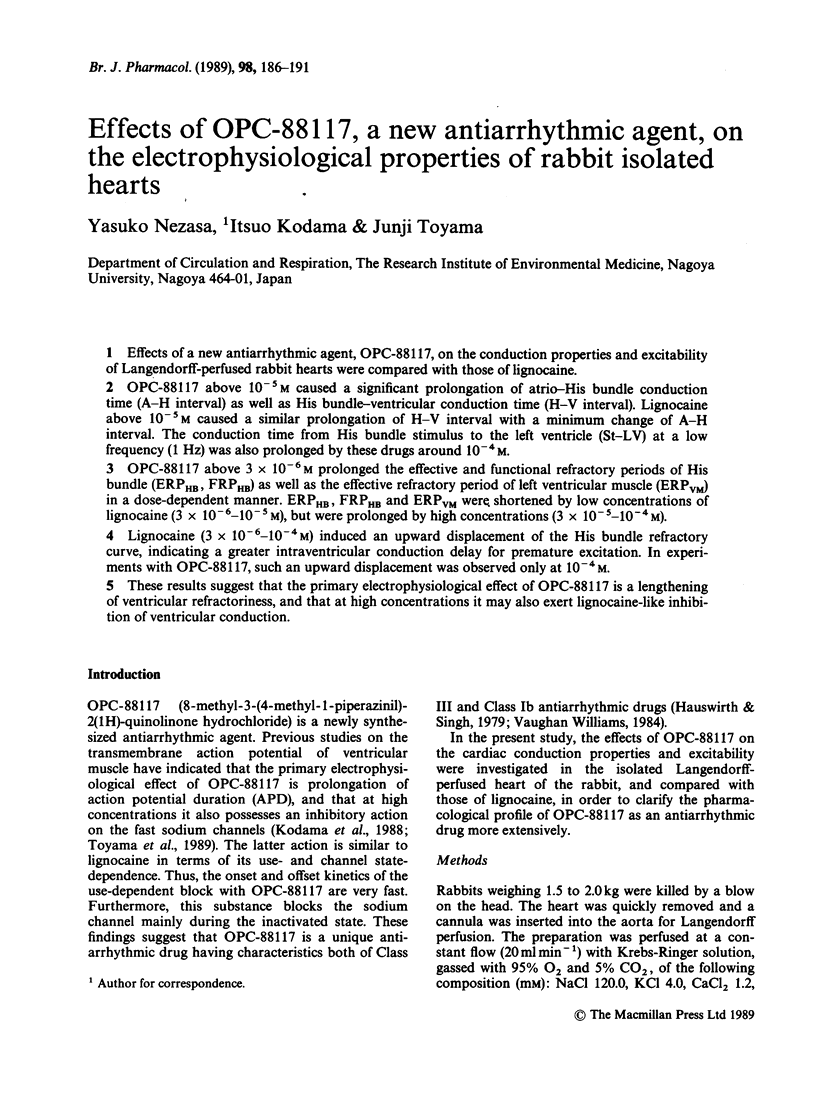
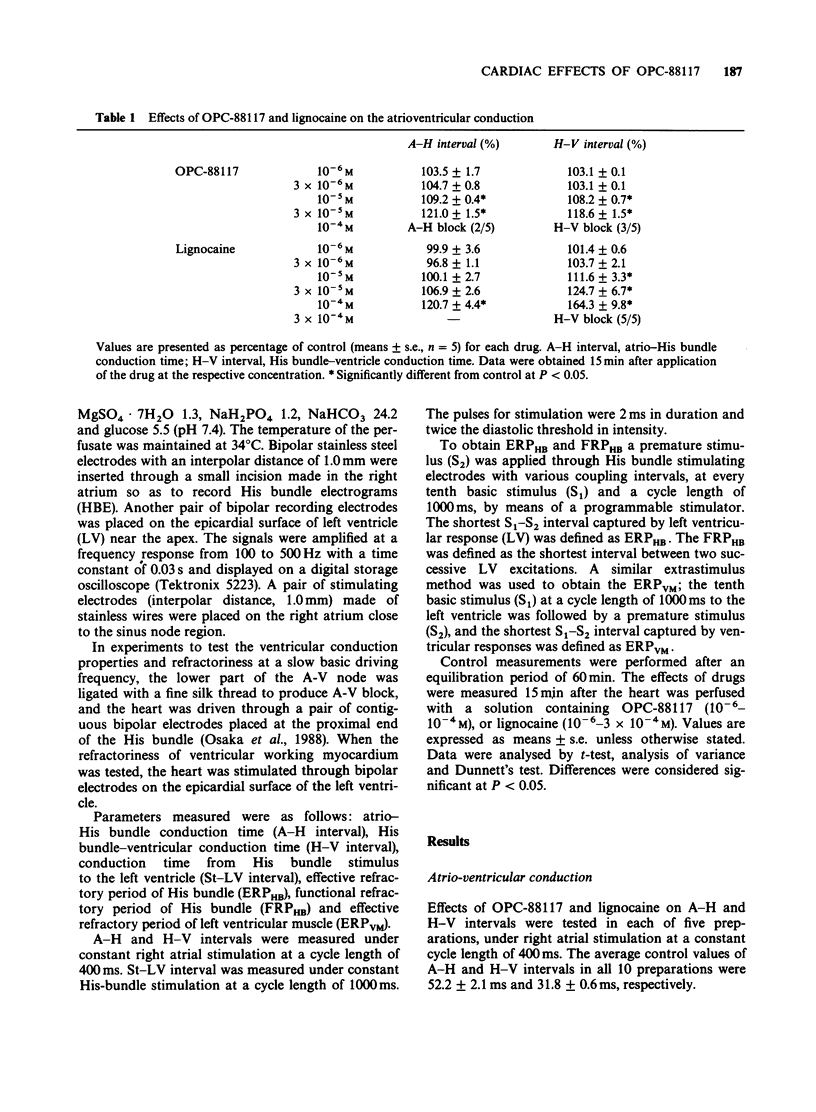
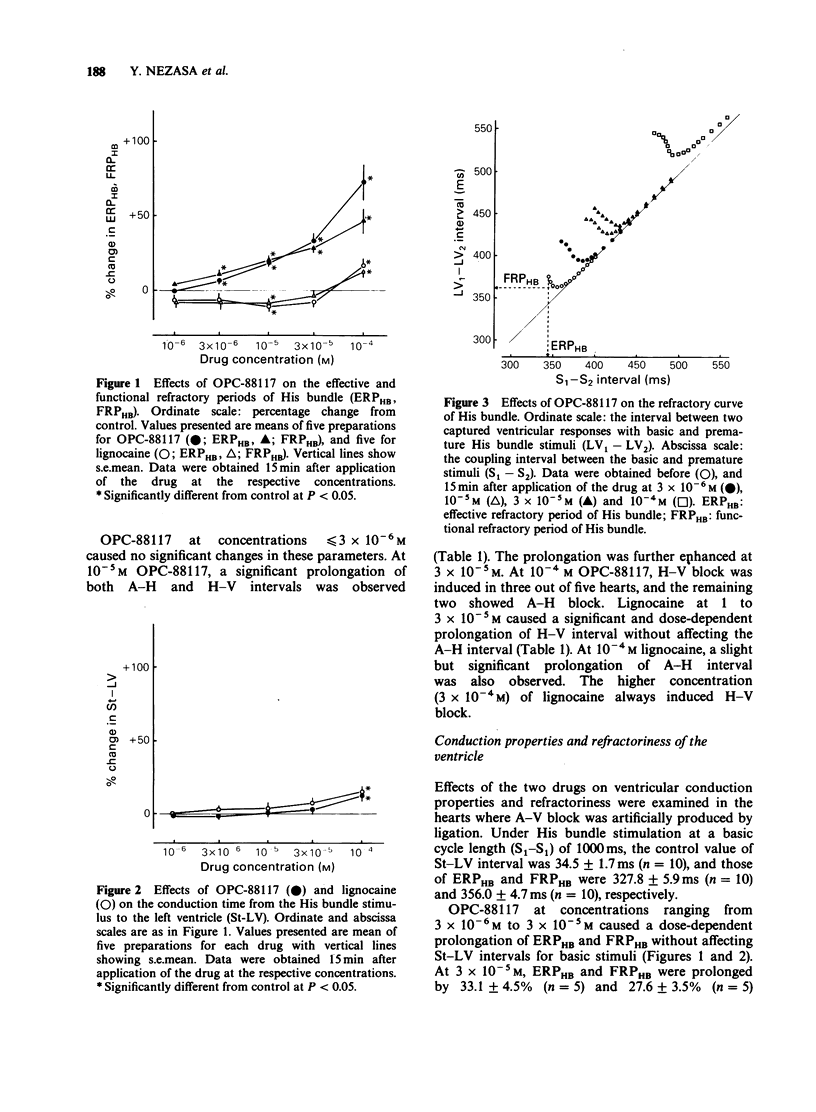
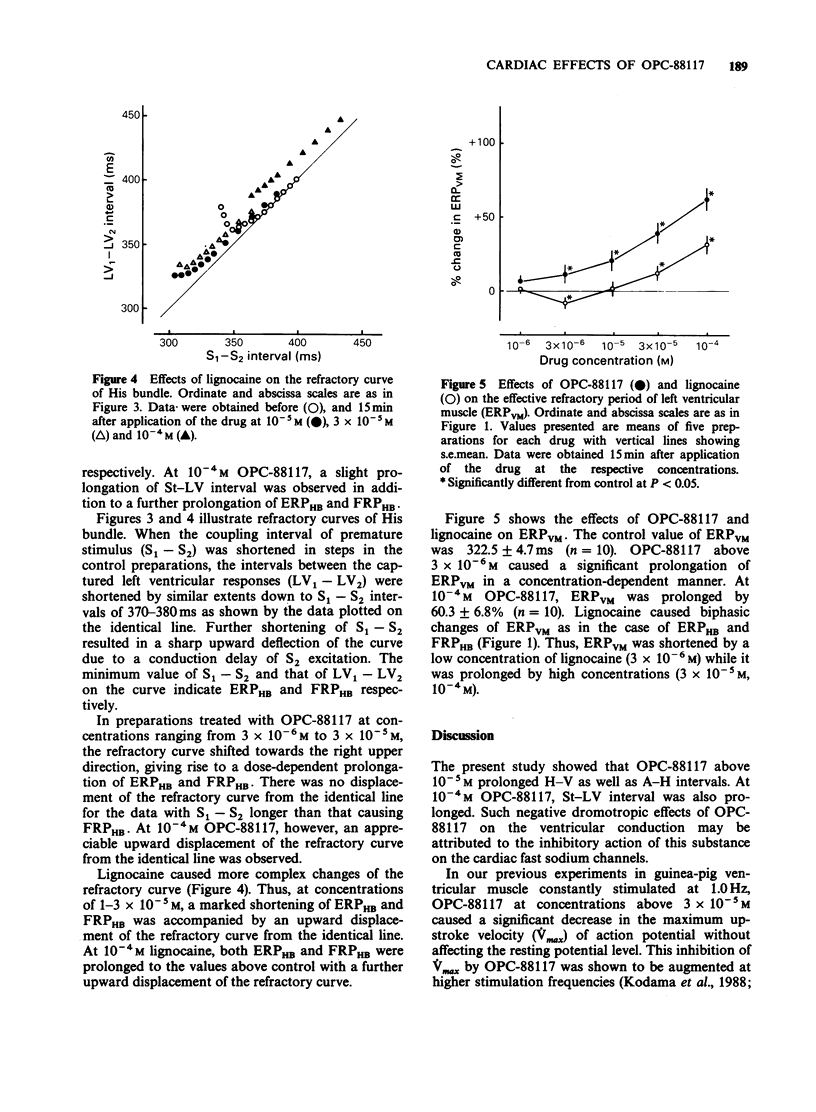
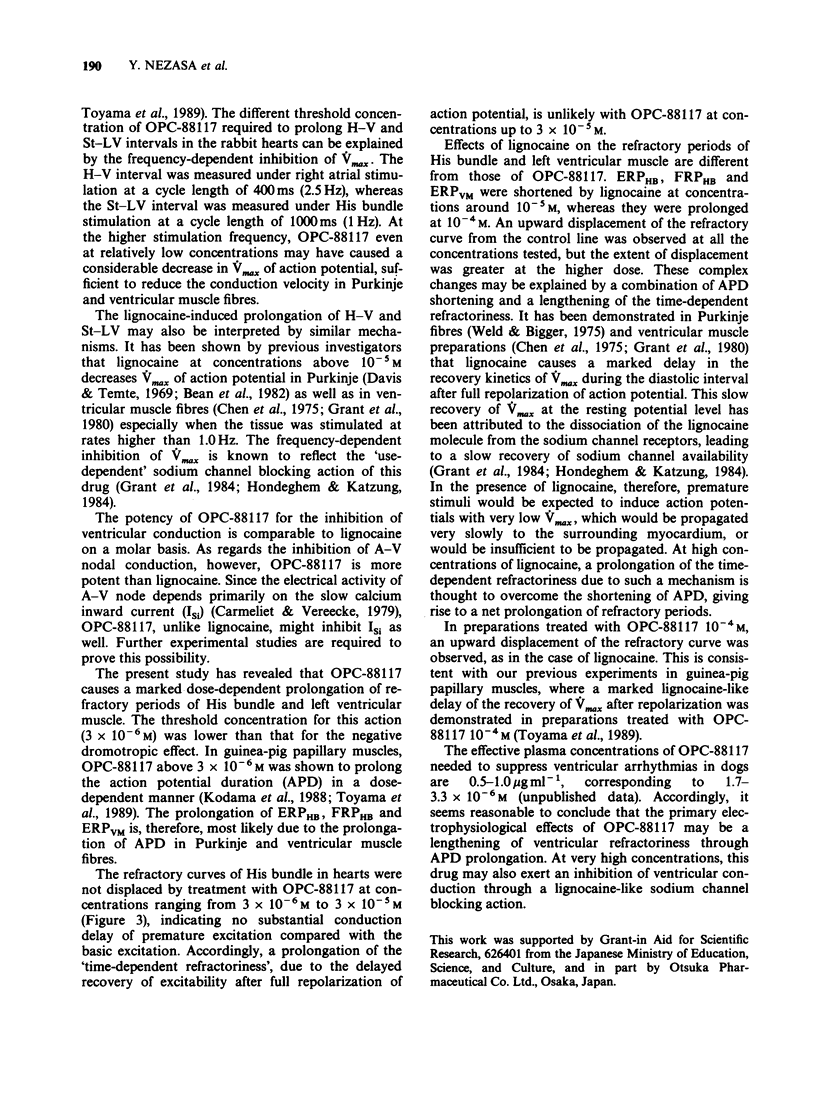
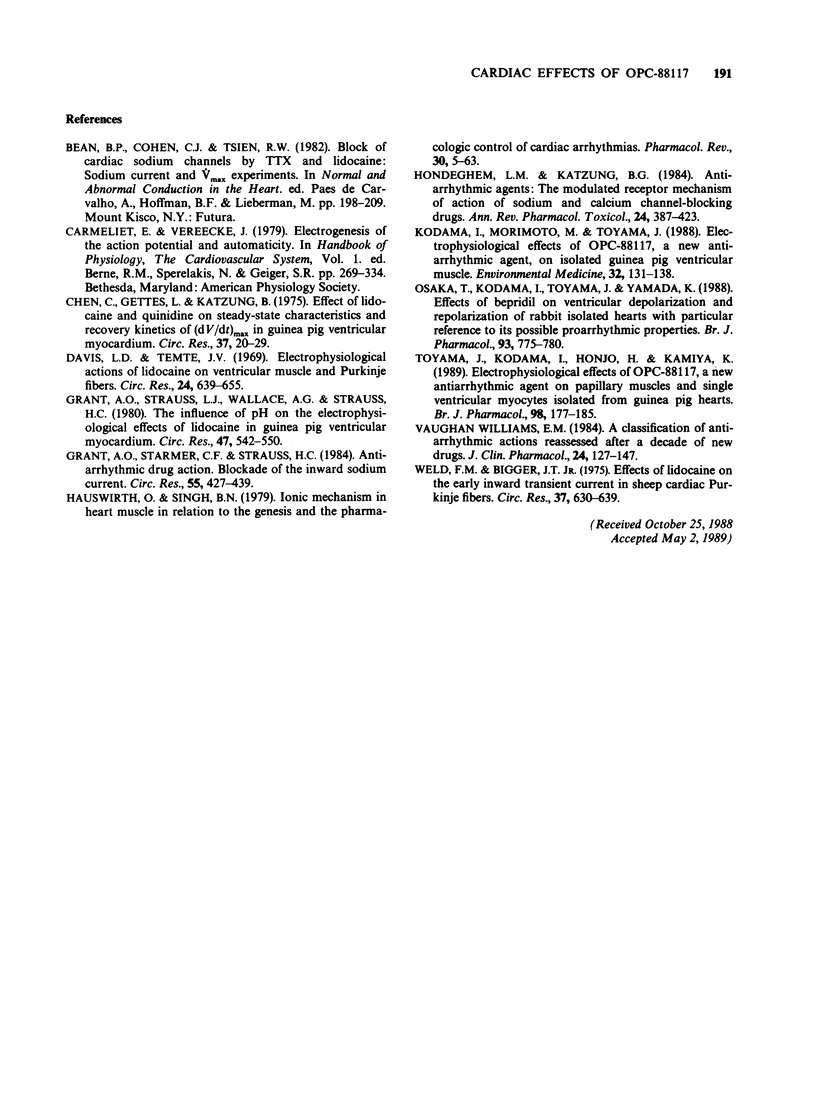
Selected References
These references are in PubMed. This may not be the complete list of references from this article.
- Chen C. M., Gettes L. S., Katzung B. G. Effect of lidocaine and quinidine on steady-state characteristics and recovery kinetics of (dV/dt)max in guinea pig ventricular myocardium. Circ Res. 1975 Jul;37(1):20–29. doi: 10.1161/01.res.37.1.20. [DOI] [PubMed] [Google Scholar]
- Davis L. D., Temte J. V. Electrophysiological actions of lidocaine on canine ventricular muscle and Purkinje fibers. Circ Res. 1969 May;24(5):639–655. doi: 10.1161/01.res.24.5.639. [DOI] [PubMed] [Google Scholar]
- Grant A. O., Starmer C. F., Strauss H. C. Antiarrhythmic drug action. Blockade of the inward sodium current. Circ Res. 1984 Oct;55(4):427–439. doi: 10.1161/01.res.55.4.427. [DOI] [PubMed] [Google Scholar]
- Grant A. O., Strauss L. J., Wallace A. G., Strauss H. C. The influence of pH on th electrophysiological effects of lidocaine in guinea pig ventricular myocardium. Circ Res. 1980 Oct;47(4):542–550. doi: 10.1161/01.res.47.4.542. [DOI] [PubMed] [Google Scholar]
- Hauswirth O., Singh B. N. Ionic mechanisms in heart muscle in relation to the genesis and the pharmacological control of cardiac arrhythmias. Pharmacol Rev. 1978 Mar;30(1):5–63. [PubMed] [Google Scholar]
- Hondeghem L. M., Katzung B. G. Antiarrhythmic agents: the modulated receptor mechanism of action of sodium and calcium channel-blocking drugs. Annu Rev Pharmacol Toxicol. 1984;24:387–423. doi: 10.1146/annurev.pa.24.040184.002131. [DOI] [PubMed] [Google Scholar]
- Osaka T., Kodama I., Toyama J., Yamada K. Effects of bepridil on ventricular depolarization and repolarization of rabbit isolated hearts with particular reference to its possible proarrhythmic properties. Br J Pharmacol. 1988 Apr;93(4):775–780. doi: 10.1111/j.1476-5381.1988.tb11462.x. [DOI] [PMC free article] [PubMed] [Google Scholar]
- Toyama J., Kodama I., Honjo H., Kamiya K. Electrophysiological effects of OPC-88117, a new antiarrhythmic agent on papillary muscles and single ventricular myocytes isolated from guinea-pig hearts. Br J Pharmacol. 1989 Sep;98(1):177–185. doi: 10.1111/j.1476-5381.1989.tb16879.x. [DOI] [PMC free article] [PubMed] [Google Scholar]
- Vaughan Williams E. M. A classification of antiarrhythmic actions reassessed after a decade of new drugs. J Clin Pharmacol. 1984 Apr;24(4):129–147. doi: 10.1002/j.1552-4604.1984.tb01822.x. [DOI] [PubMed] [Google Scholar]
- Weld F. M., Bigger J. T., Jr Effect of lidocaine on the early inward transient current in sheep cardiac Purkinje fibers. Circ Res. 1975 Nov;37(5):630–639. doi: 10.1161/01.res.37.5.630. [DOI] [PubMed] [Google Scholar]


